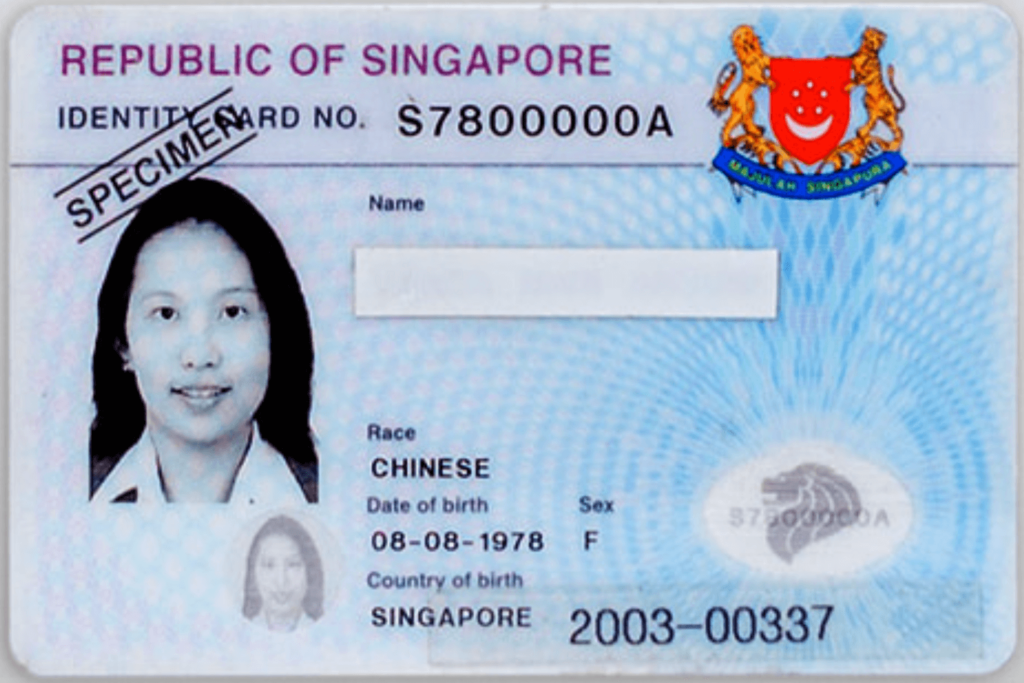
As an expatriate, Singapore might feel like more than just a place to work; it can truly feel like home. However, achieving Permanent Residency (PR) status in Singapore can seem daunting. With numerous individuals from diverse backgrounds vying for the same status, it’s no wonder the process can feel overwhelming. There’s no clear-cut points system, and rumours abound about what helps or hinders an application. Instead of feeling uncertain, it’s best to take the plunge and give it a try. And while you’re at it, why not let someone who specialises in this process handle your application?
Table of Contents
Top
- What is Permanent Residency?
- Why Apply for Singapore PR?
- Types of Permanent Residency Applications
- Step-by-Step Application Process
- Tips for a Successful Application
- In-Demand Sectors in Singapore
- Latest Changes to PR Process
- How Transform Borders Can Help
- Contact Us
What is Permanent Residency?

Permanent Residency in Singapore is a coveted status, granting those who obtain it the right to live, work, and study in the country without time restrictions. To obtain PR status, you must often prove your commitment to contributing to Singapore’s society and economy.
With PR, you gain access to subsidised education and healthcare, contributions to the Central Provident Fund (CPF), and the opportunity to purchase selected properties. PR holders also enjoy benefits such as lower property taxes and eligibility for public housing, among others.
Why Apply for Singapore PR?

Singapore PR offers numerous benefits, including long-term residency, access to public services, and greater job stability. Despite the challenges, the rewards of obtaining PR status are well worth the effort.
- No More Worrying About Work Pass Renewals: With PR status, you can switch jobs without jeopardising your employment pass status. This makes you a more attractive hire for locally-based companies.
- Eligibility for Full Singapore Citizenship: After holding PR status for several years, you can apply for full citizenship, enjoying the same rights as locally-born citizens.
- Home Ownership: PRs can purchase resale HDB flats, the most affordable housing options in Singapore, and have priority for housing loans.
- Retirement Benefits: PRs enjoy financial and tax benefits provided by CPF, which can be used for healthcare, home ownership, family protection, and asset growth.
- Flexibility in Changing Jobs: PR status allows you to change jobs without the need to reapply for work passes.
- Family Inclusion: You can include your spouse and unmarried children under 21 in your PR application and apply for long-term visas for your parents.
- Business Opportunities: PR status enables you to set up your own company and enjoy business advantages like low taxes and first-world infrastructure.
Types of Permanent Residency Applications

Before diving into the application process, it’s crucial to determine your eligibility for PR. The Immigration & Checkpoints Authority (ICA) of Singapore outlines several categories of applicants:
- Spouse and Unmarried Children (below 21 years old) of a Singapore Citizen (SC) or Permanent Resident (PR)
- Aged Parents of a Singapore Citizen
- Employment Pass or other similar passes like PEP/ONE Pass or S Pass Holders (you need to have held the pass for a minimum period of 6 months)
- Students Studying in Singapore
- Foreign Investors in Singapore

Step-by-Step Application Process
Step 1: Gather Required Documents

The first step in applying for PR is gathering all necessary documents. Given the recent changes, the following documents are essential:
- Passport-sized photographs.
- Valid passport and travel documents.
- Birth and marriage certificates (if applicable).
- Educational certificates, transcripts, skills certificates, and professional licenses.
- Employment documents: Including a letter from your current employer and your most recent six months’ salary slips.
- Income tax returns: Only if you are living overseas.
- Business documents: If you are a business owner, include the latest business registration certificate from ACRA, the last three years’ balance sheets, and the last three years’ profit and loss statements.
- Membership certificates: If you are a member of any professional organisations or societies.
Note: Recent changes have removed the requirement for Annex A (company’s information), Applicant’s declaration, and appendix to authorise ICA to verify financial information. Additionally, previous employment letters are no longer required.
Ensure all documents are translated into English if they are in another language.
The Immigration Checkpoint Authority (ICA) only accepts:
- Translations by the embassy of the country/place that issued the document.
- Translations produced by a notary public in Singapore or the country/place that issued the document.
Step 2: Online Submission via ICA e-Service

The ICA has made the PR application process fully digital. Visit the ICA e-Service to submit your application by logging in using your Singpass. Once logged in, fill out the application form and upload all required documents. The system will guide you through the process, ensuring that no necessary information is omitted.
Step 3: Fill in Particulars and Upload Documents Within 7 Days

Once you have gathered all the required documents, you will need to fill in your particulars and upload the necessary documents online. It’s crucial to complete this step accurately and within the 7-day timeframe. Failure to do so will result in the need to redraft the entire application.
Step 4: Review and Declare the Application Within 7 Days

All applicants, including the main applicant, spouse, and children, must review and declare the accuracy of the information submitted online to ICA using Singpass. If Singpass is not applicable (e.g., for applicants overseas or under 15 years old), ICA will provide unique login credentials for this purpose. If you are eligible for Singpass and do not have an account, you can register online here or visit a Singpass counter.
Step 5: Pay the Application Fee

Once the application is submitted, you will need to pay a non-refundable processing fee of SGD 100 per applicant. This payment can be made online via credit card.
Step 6: Wait for the Outcome

The processing time for PR applications has been streamlined and is now expected to take within 6 months. During this period, ensure that you respond promptly to any requests for additional information or documents from the ICA.
Supporting Documents That May Be Asked During Your PR Application
- Curriculum Vitae of Family and Spouse’s Family: Detailed resumes of your immediate family members and your spouse’s family members.
- Updated Employment Documents: If there have been any changes in your work, such as recent salary slips and bank statements, these should be included.
- Business Ownership Information: If you or your spouse own a business, you will need to provide information about your business, including the latest balance sheets, corporate bank statements, and recent agreements or invoices entered into.
Step 7: What to Do After Receiving Your PR Approval Letter

If your application is approved, you will receive an approval letter. You must complete the following steps within the timeframe specified in the letter:
- Schedule an Appointment with ICA: You will need to visit the ICA to complete the formalities. This includes the collection of your PR card and other relevant documents.
- Medical Examination: If you or any family members included in your application are above 15 years old, a medical examination will be required as part of the formalities. Ensure this is completed promptly.
- Obtain a Re-Entry Permit (REP): Ensure you obtain your REP, which allows you to travel in and out of Singapore. The REP is valid for 5 years and must be renewed accordingly.
- Register for CPF Contributions: Start contributing to the Central Provident Fund (CPF) as required. This will be beneficial for your healthcare, housing, and retirement planning.
Step 8: If Your PR Application is Not Successful

If your PR application is not successful, you have two primary options:
- Appeal: You can appeal the decision if you believe there were exceptional circumstances. Appeals should be made within six months of the rejection.
- Reapply in 6 Months: A more advisable approach is to reapply for PR after six months. During this time, focus on enhancing your profile by gaining further endorsements, contributing more to the community, or improving your professional standing.
Tips for a Successful Application

Given the recent changes to the PR application process, it’s more important than ever to ensure that your application is comprehensive and strategically presented. Here’s how you can strengthen your application:
- Maintain a Clean Record: Ensure there are no legal issues or discrepancies in your documentation. A clean record is essential for a successful PR application.
- Provide Comprehensive and Accurate Information: With the new requirement for extended family information, including details about parents, siblings, and other family members, it’s crucial that all information is accurate, well-documented, and consistent across all submitted documents. This includes educational background, employment history, and any notable achievements.
- Showcase Employment Stability and Business Success: Demonstrate your employment stability or business success through up-to-date documents. For business owners, ensure that financial documents like balance sheets and profit and loss statements accurately reflect the strength and stability of your business.
- Highlight Memberships and Contributions: If you are a member of professional organisations or societies, include membership certificates and highlight significant contributions. This shows active involvement in the community and professional circles, which is valued by the ICA.
- Demonstrate Commitment to Singapore: Show your investment in Singapore through long-term involvement in social and economic activities. Highlight community service, volunteer work, and any contributions that reflect your commitment to integrating into Singaporean society.
- Brand Your Application Effectively: Tell your story in a compelling way. Highlight your successes, challenges, and the value you bring to Singapore. Focus on how your skills, network, and achievements align with Singapore’s long-term goals, especially in in-demand sectors like technology, healthcare, and sustainability.
- Seek Professional Advice: Consulting with immigration experts who are familiar with the latest changes to the PR application process can be invaluable. They can help ensure that your application is comprehensive, well-prepared, and strategically aligned with the ICA’s expectations, increasing your chances of success.
- Persistence and Improvement: If your PR application is rejected, don’t be discouraged. Consider reapplying after the recommended time frame, using the interim period to strengthen your profile. Focus on gaining further endorsements, pursuing additional education, or making more significant contributions to your field.
In-Demand Sectors in Singapore with High Success Rate for PR Applications

Employment in certain key sectors can significantly boost your chances of PR approval in Singapore. The government prioritises industries crucial to the nation’s growth:
- Technology and Digitalisation: Singapore is a global leader in tech, with strong investments in AI, cybersecurity, and data science. Skills in these areas are highly valued, making tech professionals attractive PR candidates.
- Green and Sustainable Technologies: Sustainability is central to Singapore’s development. Expertise in environmental engineering, renewable energy, and urban planning aligns with national goals, enhancing PR prospects.
- Healthcare and Biotechnology: As a hub for biomedical sciences, Singapore values professionals in medical research, biotechnology, and healthcare management. Your role in these fields supports key national priorities.
- Financial Services and Fintech: Singapore’s financial sector, especially fintech, is dynamic and growing. Experience in digital banking, blockchain, and financial analysis makes your PR application stronger.
- Advanced Manufacturing and Robotics: With a focus on Industry 4.0, Singapore prioritises smart manufacturing and robotics. Professionals in automation and data analytics are crucial to this sector’s growth, improving PR application outcomes.
Latest Changes to the PR Application Process

Recent changes to the PR application process under the Professional Technical Scheme (PTS) include a significant expansion in the information and documents required:
- Extended Family Information: Now, extended information about the family members of the main applicant and their spouse is required. This includes identity card and passport details, marital status, education information, and employment and salary details. Family members also include parents and siblings of the main applicant and spouse.
- Achievements of Family Members: Achievements of every family member, not just the main applicant, but also the spouse and children included in the application, must now be provided.
- Detailed Employment Information: More details are required about the main applicant’s employment, such as industry sector, UEN of the company, turnover of the company in the last three years, staff strength, and the company’s paid-up capital. If the main applicant is a business owner, additional business documents are required, such as the latest business registration certificate from ACRA, balance sheets, and profit and loss statements for the last three years.
- Membership Certificates: If the main applicant is a member of any organisation or society, membership certificates must now be provided.
- Changes in Documentation Requirements: Documents such as Annex A (company’s information), Applicant’s declaration, and appendix to authorise ICA to verify financial information are no longer required. Additionally, previous employment letters are not required, and the company letter can now be dated no more than three months from the submission date, as opposed to one month previously.
- Interchangeable Main Applicant: If both you and your spouse hold Employment Passes (EPs), you have the option to submit both profiles to the ICA. They will evaluate and consider which profile is more likely to result in a favorable outcome for your application.
- Eligibility for Multiple Application Types: If you qualify for more than one type of PR application, you can request to be considered for both within a single submission..
- Singpass Declaration: All applicants in the PR application, including the main applicant, spouse, and children, are now required to review and declare the accuracy of the information submitted online to ICA using Singpass. If applicants are not eligible for Singpass (e.g., if they are overseas or under 15 years old), ICA will provide unique login credentials to review and declare the application information.
- Streamlined Processing Time: ICA has advised that all PR applications will now be processed within 6 months. This reduction in processing time makes the process more efficient and provides applicants with quicker outcomes.
How Transform Borders Can Help

Navigating the updated PR application process can be complex, but Transform Borders is here to guide you:
- Expert Legal Guidance: We ensure your application meets ICA’s expectations, highlighting crucial details, especially with the new family and employment information requirements.
- Comprehensive Documentation: We help you gather and organise all necessary documents, ensuring they are complete, accurate, and properly formatted.
- Efficient Process Management: We handle the entire application process, ensuring timely submission, especially with the 7-day deadline after drafting begins.
- Continuous Support: Our assistance doesn’t stop at submission. We help you respond to ICA requests and offer a complimentary appeal if necessary.
- Tailored Advice: We provide personalised strategies to address new requirements, such as membership certificates and family achievements.
- Discounted Reapplication: If needed, we offer a discounted fee for reapplying, ensuring you have the best chance of success.
Contact Us
Applying for Singapore PR is competitive but achievable, with around 22,000 approvals annually. Despite recent changes requiring more detailed information, there is a consistent opportunity for well-prepared applicants. By presenting a strong, accurate, and comprehensive application, and focusing on key sectors, you can enhance your chances of success. If your application isn’t initially successful, persistence and improvement are crucial.
By working with Transform Borders, you’re not just getting help with paperwork—you’re gaining a partner dedicated to helping you secure your place in Singapore. We invite you to contact us for a comprehensive consultation and discover how we can tailor our services to meet your unique needs. For more insights, explore our guide to immigration agencies in Singapore that can ease the process and help you reach your goals.
